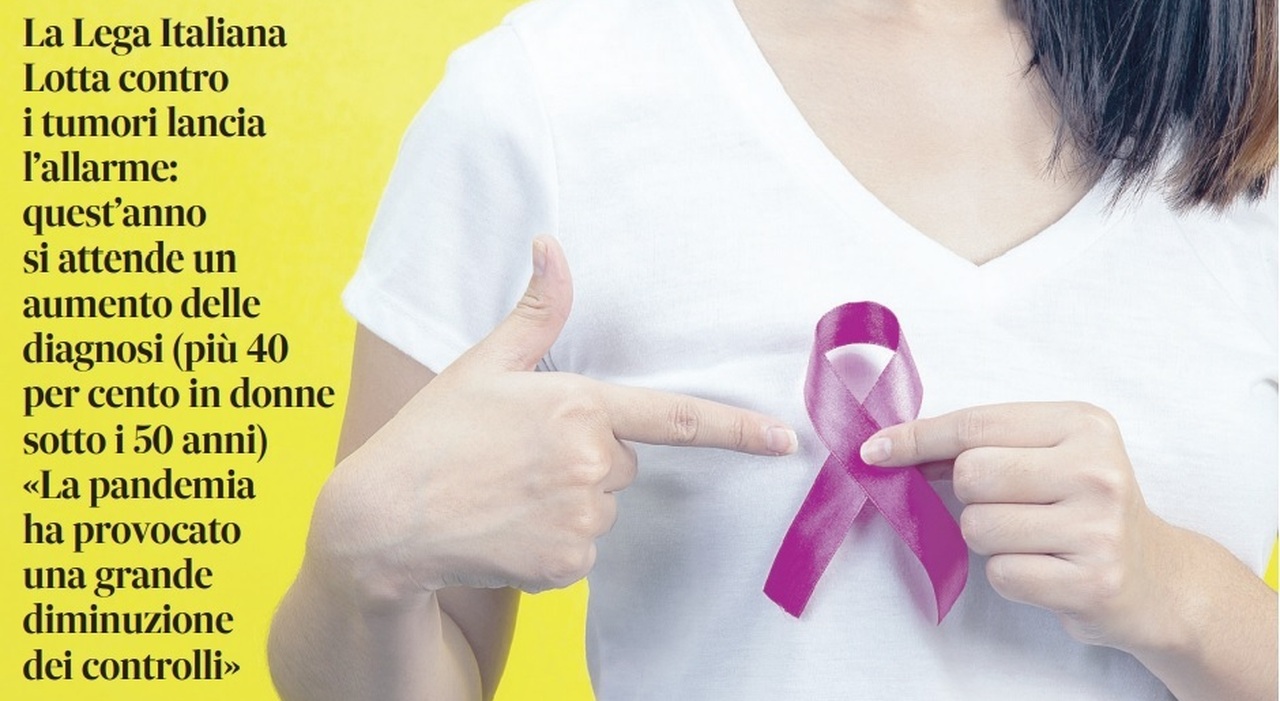It was predictable and somehow heralded. After three years of pandemic, an escalation of breast cancer cases. Because the tests for the new diagnoses have not been done nor have the controls been capillary. The alarm was sounded on the occasion of 8 March by the Italian League for the Fight against Tumors (Lilt).
Heart, after angioplasty women at risk more than men: that’s why. I study
«During this year – explains Francesco Schittulli, president of Lilt – over 55,700 cases are expected with an increase of 0.5% compared to 2020. 40% of which in women under 50 and a mortality of at least 10 thousand people, due to late diagnoses. Once the Covid pandemic has been archived, at least in part, we are faced with another emergency. Against which the Italian League for the Fight against Cancer has deployed its army of doctors to disseminate the culture of prevention and visit as many women as possible, because detecting cancer in an early stage means offering the possibility of healing.
THE CURE
Recent years have resulted in 817,000 fewer mammograms, an estimated 3,558 fewer breast cancer diagnoses, and an accumulated delay of 4.8 months. In the fight against cancer, the sooner a certain diagnosis is reached, the greater the chances of a cure. Mammography screening alone has reduced the mortality of one of the most widespread and frequent neoplasms in the world by 30%. Here, before the pandemic, 63% of patients are alive 5 years after diagnosis and the European average stops at 57%.
«Early diagnosis allows over 90% of women affected by this neoplasm to recover. It is therefore essential to make up for the delays in screening – says Professor Saverio Cinieri, president of the Italian Association of Medical Oncology – but it is even more important to convince women to participate in screening programs which, especially in the South, suffered from poor adherence even before the pandemic”. There is a “submerged” number of cases not yet diagnosed (or identified late) which has not yet been quantified and which could represent a major problem for the health system for the next few years. Furthermore, although the invitation to participate in the screening is almost fully implemented, women do not always submit to the survey for which they are called. Fewer invitations to participate in cervical screenings exceed one million and 500 thousand, while exams not performed are over 780 thousand (-35%) compared to 2019. «Today we have to divide our life into a pre and post -Covid pandemic – Schittulli underlined again -. Cancer treatments had succeeded in extending the life expectancy of patients, up to 85 years. Experience now tells us that when we manage to identify the presence of a tumor in time, we manage to win the battle and save even 98% of patients. In the three years of lockdown we have witnessed a paradoxical situation, prevention and early diagnosis have been set aside, and only the Covid pandemic has been talked about ».
THE CONFERENCE
Meanwhile, women oncologists are organizing themselves to do their part in tackling this cancer pandemic. A conference was held in Rome in the Sala della Regina di Montecitorio and organized by Women for Oncology (W4O) Italy. «W4O was born as a “rib” of ESMO, the European Society of Oncology explains Professor Rossana Berardi, president of W4O Italy and Full Professor of Oncology at the Polytechnic University of Marche to represent the requests of women oncologists and promote paths that lead to equitable opportunities for career progression and leadership. Our goal is to promote a culture of health that includes prevention and equal access to care for men and women”.
THE INHERITANCE
The years of the pandemic have blown up many cancer screenings, which must therefore be recovered. It is also very important to turn the spotlight on hereditary-family cancers, those that celebrities such as Bianca Balti or Angelina Jolie have made known to the general public. In the case of breast cancer these are linked to the mutations of the BRCA 1 and 2 genes. «It would therefore be important – continues Professor Berardi – to periodically offer free oncological genetic consultations, to intercept families at high risk for breast cancer. This would make it possible to carry out targeted prevention on that portion of high-risk families”. There are three characteristics to pay attention to: a tumor at a young age, i.e. under 35 years of age. The anticipated age of onset of the tumor in the family tree (if the grandmother had the tumor at 80, the mother at 60 and a daughter under 50, for example). And again, the so-called aggregation, or the presence of multiple cases of cancer in the same family.
Read the full article
on The Messenger

